Posted on August 15, 2017
22. BACON’S CASTLE – SURRY COUNTY, VIRGINIA
Bacons Castle is the Nation’s oldest brick house and is filled with ghosts.

Image Source: HauntedHovel.com
Bacons Castle Is Perfect
In Surry County, Virginia, there is an old and magnificent mansion that has many names and many admirers. As the nation’s oldest brick dwelling and only surviving high Jacobean structure, Bacon’s Castle (also known as “Allen’s Brick House” and the “Arthur Allen House”) is an architect’s dream. Historians, on the other hand, are fascinated by the important role it played in the infamous Bacon’s Rebellion of 1676. As for tourists, what they love about the castle is its beautifully restored 17th century English garden. It’s the perfect place to snap some pictures.
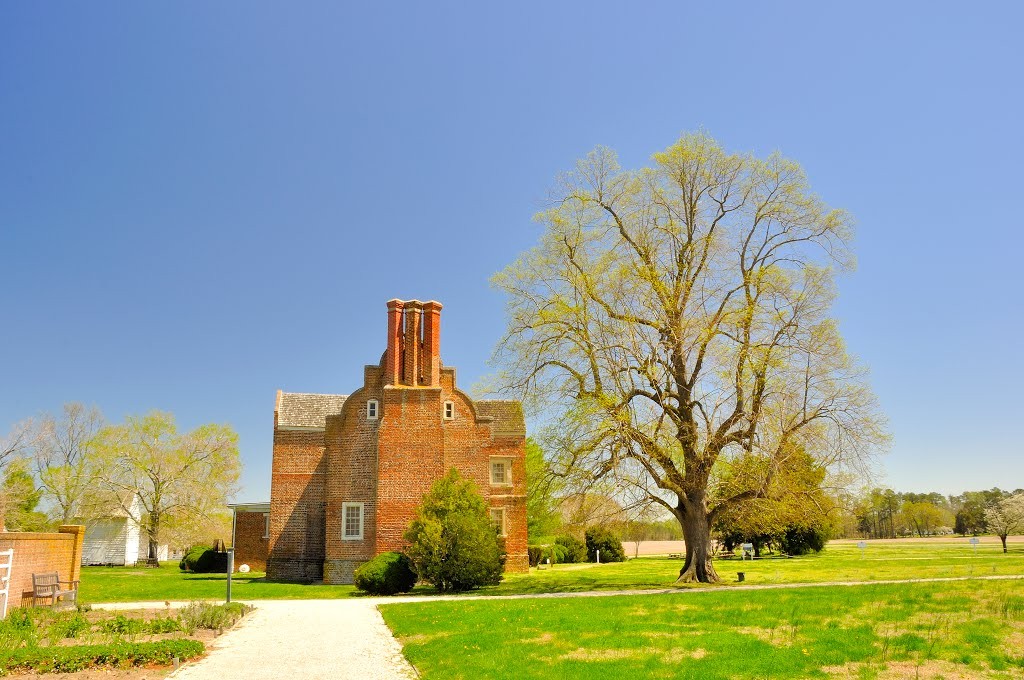
Image Source: Panoramio.com
But It’s The Paranormal At Bacons Castle That Entrances
But what draws paranormal researchers to Bacon’s Castle’s are spectral fireballs, floating heads, disembodied voices… all of which have been seen and heard at the estate.
Many have collected proof that the castle’s ghosts are very real. The team behind Spirited History, for instance, has visited Bacon’s Castle several times. Something supernatural would occur during each investigation. Their library of evidence includes “EVP’s, personal experiences, flashlight communication and K-ll responses captured on video—plus ghostly photographs.”1
So why have so many people experienced such strange things at the mansion? Well, there’s enough from the mansion’s spooky past to fill a book: tales of ominous comets, foretelling of horrible things to come; of secret romances and affairs, all ending in heartbreak; of slave abuse, Indian raids… etc., etc.
Arthur Allen
Bacon’s Castle has had 360 years to foster ghosts. It was built in 1655 by Arthur Allen, a successful British tobacco agent who moved to Virginia in the 1640s. Allen used his wealth to purchase 2,000 acres of land in Surry County, then proceeded to populate its grounds with walkways, out buildings, and of course a stellar mansion.
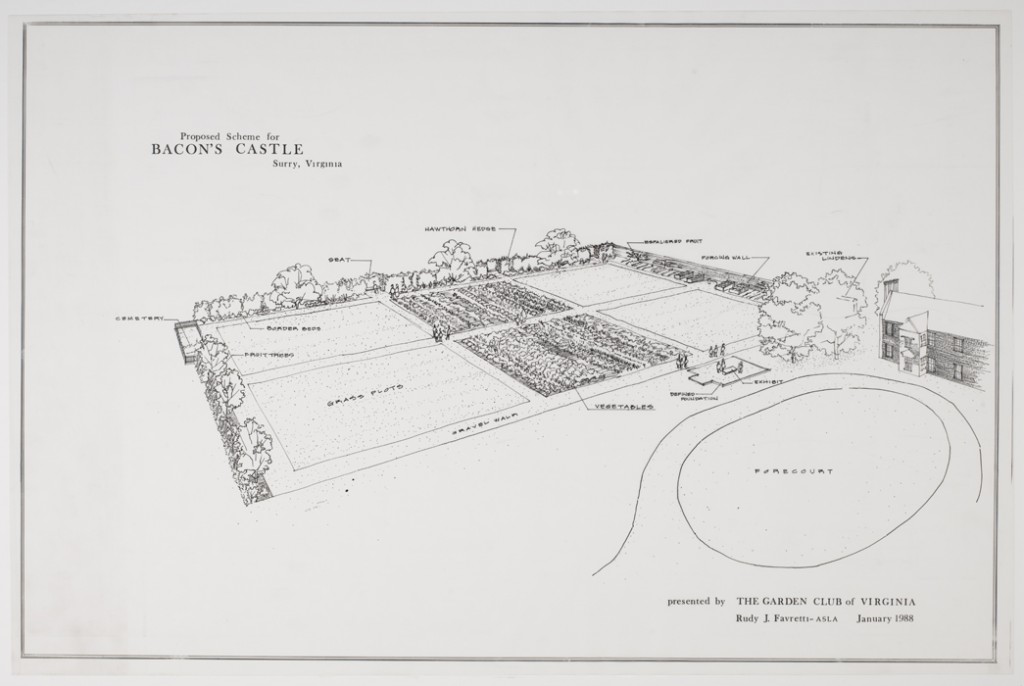
Image Source: Virginia Historical Society
The image below of the castle’s southwest exterior façade showcases two of the structure’s most notable design elements: curved Flemish gables and diagonal chimney stacks.

Image Source: Nps.gov
Major Allen Upgraded The Property
Arthur Allen’s son, Major Arthur Allen, inherited Bacon’s Castle after his father’s death in 1669. How the castle appears today (a “four-story, cruciform structure”2) is a result of Major Allen’s determined efforts to live in a home of utmost luxury. Besides expanding the house itself, the Major also added “one of English America’s first pleasure gardens”3to the property.
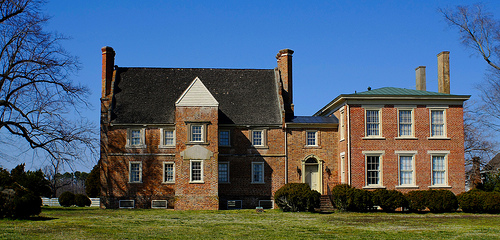
Image Source: The National Institute of American History and Democracy
For most of the 17th century, Virginians showed no real interest in the art of landscaping, nor did they view horticulture to be a worthwhile hobby. This all changed when Major Allen revealed Bacon Castle’s new and stunning garden in 1680. He had successfully transformed a large, rectangular tract of land that ran adjacent to the house into an idyllic, green oasis. Fenced in on three sides and bordered by brick on the remaining, Major Allen’s garden featured white sand pathways, neat little rows of planting beds, even an orchard. Everything was laid out in perfect symmetry.
Today, only 17th century plant specimens – such as Snapdragons, Larkspur, and Elecampane – are grown in the garden. That’s because Preservation Virginia4, the non-profit which acquired Bacon’s Castle and opened it to the public in 1983, wants it to mirror Major Allen’s original design.
His High Status In The County
Now besides his green thumb, Major Allen was also known at the time for “his high status in the county”5. He began his career as a member of the Lawnes Creek Parish, and then became the justice of peace for the Surry County Court. He also served as the county’s surveyor for a brief period of time. He secured his most notable role in 1686, when he became Speaker of the House of Burgesses.
Now Major Allen was an avid supporter of Governor William Berkeley, who was Virginia’s governor from 1641 to 1652 and from 1660 to 1677. It was during Governor Berkeley’s second administration that the infamous Bacon’s Rebellion occurred.
Like Governor Berkeley, Nathaniel Bacon was of English descent. He arrived in Jamestown in 1674. Because he “was related by blood or marriage to several of the most influential people in Virginia,”6 it took Bacon only one year to become a member of the governor’s Council.

Image Source: Legends of America
Regretting The Hire Of Nathaniel Bacon
Governor Berkeley would later regret his new hire. “In 1676, Nathaniel Bacon challenged Berkeley directly, even laying siege to and then burning Jamestown.”7 Bacon did not like the Governor’s lenient Indian policies. Governor Berkeley allowed friendly tribes to live on treaty-protected lands, for instance, and failed to retaliate after Indians attacked several colonial settlements. Nathaniel Bacon, on the other hand, deemed all Native Americans to be enemies. So when the Governor refused to support Bacon’s plan to drive out all these “enemies” from Virginia, Bacon decided to take matters into his own hands. He easily garnered an army of supporters. Many colonists not only detested Indians, but hated how Governor Berkeley handled the state’s taxes, budget, and infrastructure.
After a few initial forays against said “enemies”, Bacon was arrested and tried for his treasonous ways. However, upon his release, Bacon continued to oppose Governor Berkeley. In 1676, he and his rebels marched to Jamestown, burning buildings and attacking Berkeley supporters along the way. Bacon’s Castle would fall in their path.

Image Source: San Diego Free Press
Mansion Destroyed
On September 18, 1676, the Arthur Allen House was seized by Bacon and about seventy of his followers. Fortunately for Major Allen, he had already fled from Surry County. But his home was not as lucky. Baconists would occupy the mansion for three to four months, only deserting their posts when their leader died of dysentery on October 26. When it was finally safe for Major Allen and his family to return, what they came back to was a house left in complete disarray. What wasn’t pillaged and looted by rebels was severely damaged or completely destroyed.
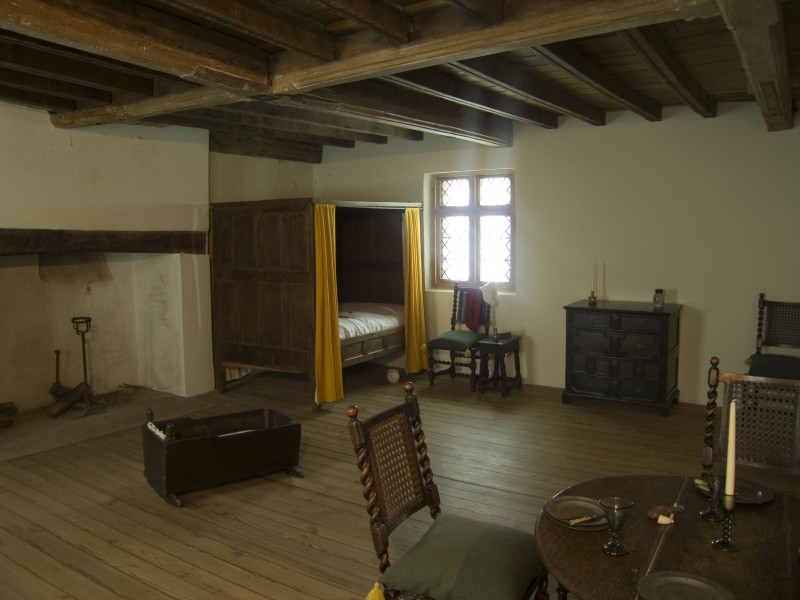
Image Source: Preservation Virginia
Comet Sighting
Many believe that a comet which streaked through the sky in the fall of 1675 may have foreshadowed this horrible event. During the colonial times, the superstitious saw such cosmic fireballs as bad omens. A comet sighting in 1644, for instance, was immediately followed by a bloody Indian raid. Another preceded the tragic death of a young woman. The girl had been banned from a lover she’d been secretly seeing behind her father’s back. One night, she decided to sneak out and visit him anyway. But the flame from her candle caught her dress and lit her on fire. Perhaps the love letter etched into one of the castle’s windows was left by her before she died.

Image Source: Jwwerner.com
Fireballs were also believed to punish naughty children. One local legend tells of a fiery sphere killing a little boy, for instance, because he refused to finish his chores.
Fireballs continue to make appearances at Bacon’s Castle. People who have lived at the house report of seeing them blaze down the stairs. In the cemetery that lies close to the castle, fireballs are also known to rise from graves.
Plenty Of Paranormal Events
Bacon’s Castle has experienced plenty of other paranormal events. Interpreter Frances Richardson has spent nearly “a quarter of a century of her life”8 trying to understand them. When she first started, the house’s stairwell had many bloodstained steps, alluding to its gory past.
One of the creepiest things seen at Bacon’s Castle is the disembodied head of an African-American woman. During the colonial times, the property lodged “as many as 300 slaves.”9 It had a total of eighteen slave quarters, but only one is still standing.
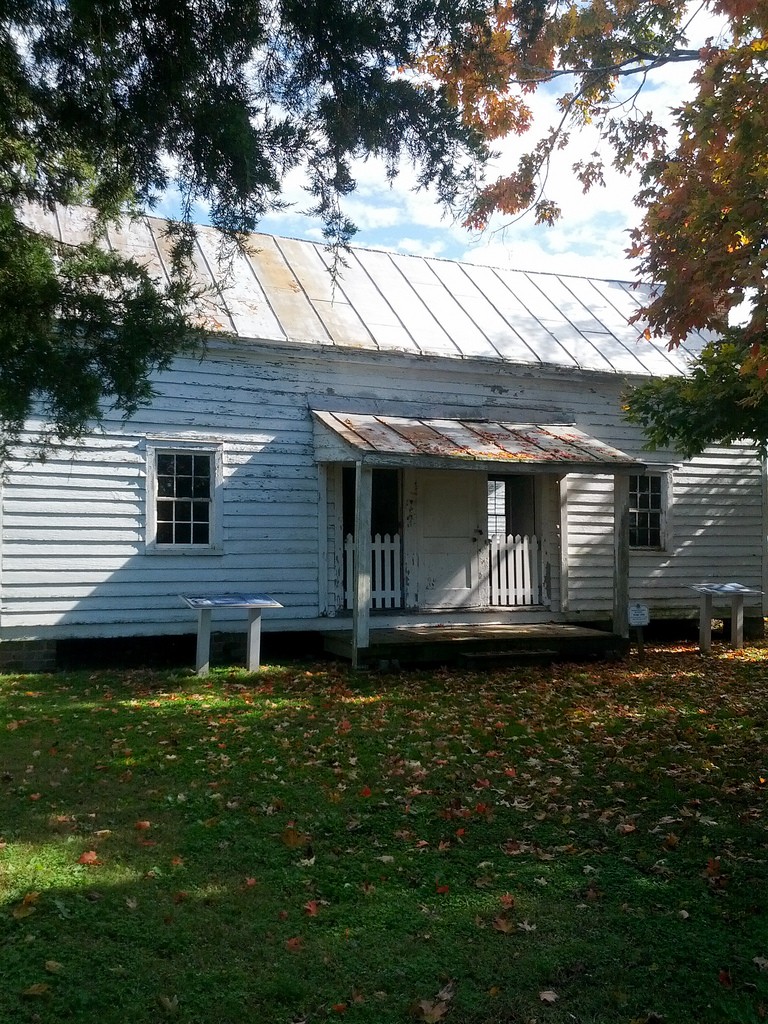
Image Source: The Midnight Society
Slaves
The conditions within early slave dwellings were horrible. While wealthy colonists lived in lavish brick buildings, their servants were cramped into rough, wooden structures, which were scantily furnished, if at all. “Us never had a chair in the house,”10 recalls a former slave. As for beds, they had to make do with piles of hay and old rags.
Sometimes, as many as ten slaves were squeezed under one roof. Illnesses thus spread very easily. Having only known pain and misery in life, slaves are not restful in death. Joanna Braswell, who leads tours of Bacon’s Castle, tells of “a young black girl who tragically died in the house’s cellar and likes to tug on visitor’s clothing.”11 The basement is famous for being one of the castle’s most active areas.
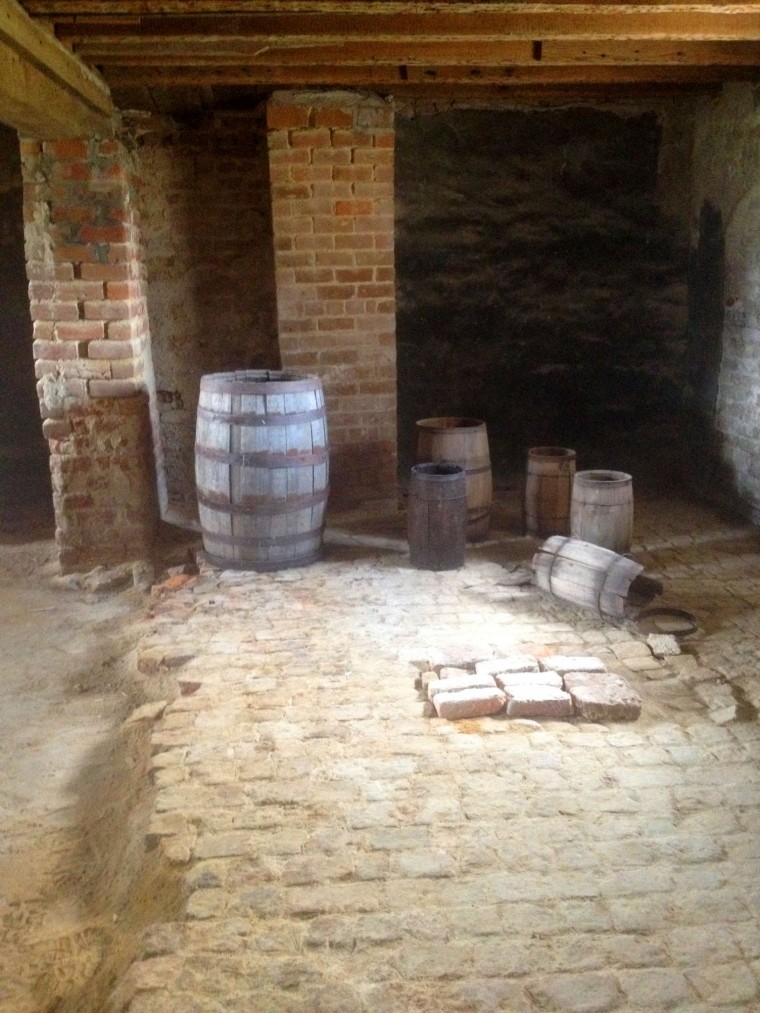
Image Source: Hamptonroads.com
Events & Noises
Things are also known to move on their own at Bacon’s Castle. Chairs rock, books fly off shelves, door close… all by themselves. One woman “discovered her room in disarray – a round burner-lamp, normally sitting on the table, leaned against a pedestal, and its globe was smashed to pieces.”12 And it’s not just objects the castle’s ghosts like to shift around – they are known to push and touch visitors as well.
Many spirits are also very noisy. People have heard loud pops (much like the sound of gunfire) shattering the house’s silence, as well as footsteps clamping down the stairs. Disembodied moans and wails add to the ruckus. Some have “even heard voices telling them to get out.”13
Thus, in 2014, Preservation Virginia launched “Haunted Bacon’s Castle,” a public tour that caters exclusively to horror enthusiasts. Event attendees are guided through the estate by The Center for Paranormal Research and Investigation, a team of ghost hunters who’ve done extensive research at Bacon’s Castle. During CPRI’s March 1, 2014 investigation, they recorded disembodied voices and screams. So successful was their visit that they summarized their work in a thorough project report14.
Says CPRI’s chemist, Brad Bradley: “’We throw out about 99.9 percent of the activity we encounter in our work as not being paranormal, but the activity at Bacon’s Castle, we can’t debunk […] We have yet to find a location that has more activity than Bacon’s Castle and we do research all over the state.’”15
Works Cited
- Branning, Debe. “investigate haunted Bacon’s Castle in Virginia.” Examiner.com. 6 July 2012. Web. 17 September 2015. Para. 3.
- Erickson, Mark St. John. “New find at ancient Bacon’s Castle.” Daily Press. 18 June 2015. Web. 17 September 2015. Para. 2.
- Erickson, Mark St. John. “New find at ancient Bacon’s Castle.” Daily Press. 18 June 2015. Web. 17 September 2015. Para. 12.
- “Bacon’s Castle: 17th Century Garden.” Bacon’s Castle. Preservation Virginia, 2015. Web. 17 September 2015.
- Gentry, Daphne and the Dictionary of Virginia Biography. “Allen, Arthur (ca. 1652-1710.)”Encyclopedia Virginia. Last modified 8 July 2013. Web. 17 September 2015. Para. 4.
- Tarter, Brent and the Dictionary of Virginia Biography. “Nathaniel Bacon (1647-1676).”Encyclopedia Virginia. Last modified 30 May 2014. Web. 17 September 2015. Para. 4.
- Billings, Warren M. and the Dictionary of Virginia Biography. “Sir William Berkeley (1605-1677).” Encyclopedia Virginia. Last modified 17 February 2014. Web. 17 September 2015. Para. 1.
- Whitehead, Bobbie. “Telling History’s Stories.” Daily Press. 8 April 2004. Web. 17 September 2015. Para. 2.
- Williams, Allison T. “Surry residents, historians sleep at Bacon’s Castle’s slave quarters.” Daily Press. 8 October 2012. Web. 17 September 2015. Para. 9.
- “South Carolina – African-Americans – Houses that Offered Little Cover.” SC Slavery. SCIWay.net, LLC., 2015. Web. 17 September 2015. Para. 7.
- Russell, Lia. “Bacon’s Castle | Historical gem hides in Surry.” The Virginian-Pilot. 3 August 2014. Web. 16 September 2015. Para. 19.
- “Top Ten Haunted Spots in Eastern Virginia.” Colonial Ghosts. 30 December 2014. Web. 17 September 2015. Para. 39.
- Russell, Lia. “Getting back to paranormal at Bacon’s Castle in Surry.” The Virginian-Pilot.18 October 2014. Web. 16 September 2015. Para. 18.
- Project Report – Bacon’s Castle – 3/1/14. Center for Paranormal Research and Investigation. 1 March 2014. Web. 17 September 2015.
- Russell, Lia. “Getting back to paranormal at Bacon’s Castle in Surry.” The Virginian-Pilot.18 October 2014. Web. 16 September 2015. Para. 7.

